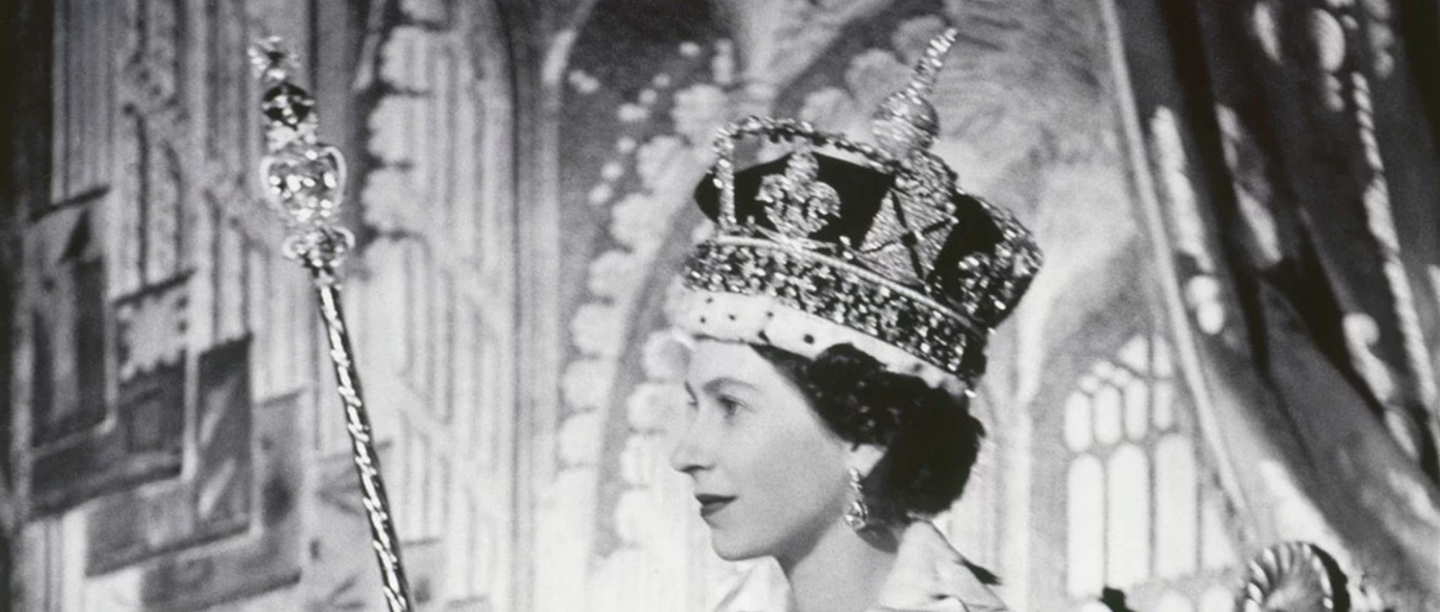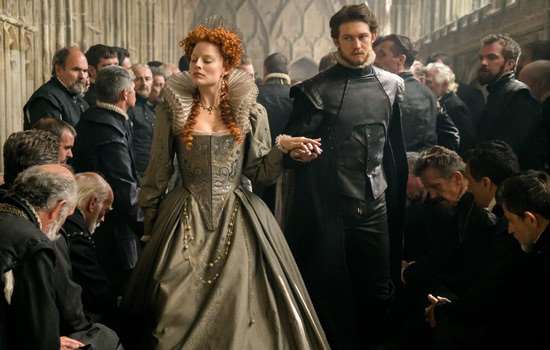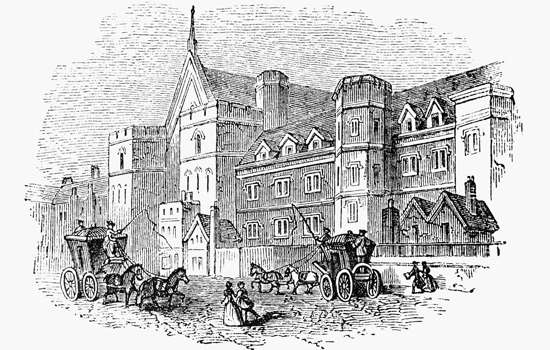
Header Image: Cecil Beaton (1904-80) - Coronation Portrait of Her Majesty The Queen (Queen Elizabeth II), 1953" from the Royal Collection Trust
Princess Elizabeth acceded to the throne to become Her Majesty Queen Elizabeth II on 6 February 1952. On 6 February 2022, 70 years later, she became the longest-reigning British monarch in history.
Who are our other longest-reigning monarchs, how did their reigns change England and Britain, and what can we see of their reigns today?
Queen Victoria – Reigned for c. 63 years and 7 months
Queen Victoria and Prince Albert at Osborne House on the Isle of Wight in 1860. © The Royal Collection,
Her Majesty Queen Elizabeth II
- Born: 24 May 1819 at Kensington Palace
- Parents: Edward, Duke of Kent and Princess Victoria of Saxe-Coburg-Saalfeld
- Succeeded to the throne: 20 June 1837
- Died: 22 January 1901 at Osborne House
Queen Victoria’s reign saw Britain reach the height of its power, ruling an empire which stretched around the world, and being proclaimed Empress of India in 1877.
Her marriage to Prince Albert of Saxe-Coburg was notably happy and produced nine children, but was cut short by his early death aged 42 in 1861.
Victoria and Albert built Osborne House as their holiday residence by the sea and it remained one of her principal residences throughout her life. Victoria died there in 1901 and, of all her residences, it is the one that still evokes her life the best – furnished and presented as it was when she lived there.
George III – Reigned for c. 59 years and 3 months
King George III in his coronation robes, from the studio of Allan Ramsay © National Portrait Gallery
- Born: 24 May 1738 at Norfolk House in St James’s Square
- Parents: Frederick, Prince of Wales and Princess Augusta of Saxe-Gotha
- Succeeded to the throne: 25 October 1760
- Died: 29 January 1820 at Windsor
George III was the first of the Hanoverian monarchs to be born in England and succeeded his grandfather, George II, to the throne.
During the first 25 years of his reign, the American colonies were lost in the American War of Independence. Following this, George’s reign covered victory in the 22-year war against Revolutionary and Napoleonic France, above all the victories of Trafalgar (1805) and Waterloo (1815), and Britain growing as an international power.
At home, his reign was marked by convulsive social change, with society transformed, sometimes painfully, by the Agricultural Revolution and the early stages of the Industrial Revolution. From 1811, George’s intermittent mental illness meant that his son, George IV, was sworn in as regent.
You can see some of the great events and trends of George’s reign in our sites. The Iron Bridge at Ironbridge was at the cradle of the Industrial Revolution; the fortifications in Kent (the Dover Western Heights, Dover Castle, and the Dymchurch Martello Tower) which were to protect England against the threat of a French invasion during the Napoleonic Wars; and the Georgian architecture of Kenwood, itself home to Lord Mansfield who presided over an early legal case in the initial chain of events towards the eventual abolition of the slave trade.
Henry III – Reigned for c. 56 years
The coronation of Henry III from the Chronicle of the kings of England from Edward the Confessor (1042–1066)
to Edward I (1272–1307) held by the British Library shelfmark: Cotton MS Vitellius A XIII
- Born: 1 October 1207 at Winchester
- Parents: King John and Isabella of Angouleme
- Succeeded to the throne: 19 October 1216
- Died: 16 November 1272 at Westminster
Henry III is more noted for his piety and interest in building, than as a great warrior or leader.
His reign was marked by unsuccessful attempts to recover lost ancestral lands in France, and by the outbreak of a series of rebellions against his rule, the Barons’ Wars (c. 1255–65). The concluding act of this struggle was the year-long siege of Kenilworth Castle, held by the supporters of Simon de Montfort, leader of the revolt. Though the rebels were defeated, the long-term result of the struggle was the origin of Parliament.
Very little survives of Henry’s patronage of the arts. He made the largest and greatest single act of patronage in all English history when he rebuilt Westminster Abbey at his own expense (c. 1245–68). Despite the Victorian restoration, Westminster Chapter House, still represents a key part of one of the greatest artistic achievements of English history.
Other rare examples of his patronage include Clifford’s Tower, built by Henry, as a new heart for the royal castle in York; it includes a chapel built by his great mason Henry of Reyns. The chapel in the Agricola Tower at Chester Castle contains wall paintings from his reign – these fragments are very rare survivals of the many mural paintings commissioned by this cultivated king.
Edward III – Reigned for c. 50 years and 4 months
Edward III (seated) grants Aquitaine to his son Edward, the Black Prince held by the British Library,
shelfmark: Cotton MS Nero D VI, f.31
- Born: 13 November 1312 at Windsor
- Parents: Edward II and Isabella of France
- Succeeded to the throne: 24 January 1327
- Died: 21 June 1377 at Richmond (then called Sheen)
When he was declared ruler on 24 January 1327, Edward was 14 years old. His mother, Isabella, and her lover, Roger Mortimer, lord of Wigmore, quickly assumed power until Edward overthrew them both and seized power himself in October 1330. Following this, Isabella lived on her estates, chiefly at Castle Rising.
Edward III reversed England’s decline, as well as the catastrophic decline in royal authority seen under his father. He carried the country to new heights of power, winning great victories over the French in the Hundred Years War. Although the territorial gains proved short-lived, his foundation of the Order of the Garter, the world’s oldest order of chivalry, remains to this day. In his lifetime, he was seen as the embodiment of a great king.
Edward was a great builder: he remodelled the Palace of Westminster, adding a series of private chambers to the Palace as well as completing St Stephen’s Chapel. Most of these chambers have long been destroyed, but one part of the inner palace remains, the Jewel Tower at Westminster, built by Edward to house his Privy Wardrobe – his own clothes, arms and armour. This is one of the most important sites from his reign to survive.
Elizabeth I – Reigned for c. 44 years and 4 months
Portrait of Queen Elizabeth I by an unknown artist. It was almost certainly painted from life
© National Portrait Gallery
- Born: 7 September 1533 at the Greenwich Palace
- Parents: Henry VIII and Anne Boleyn
- Succeeded to the throne: 17 November 1558
- Died: 24 March 1603 at Richmond Palace
Elizabeth I was probably the most intelligent, and almost certainly the best-educated monarch, that England has ever seen, receiving an excellent education from the scholar Roger Ascham. Her intelligence manifested itself in her famous reluctance to marry, preferring to live and die a virgin, which became a central part of her identity and legend in her own lifetime.
Elizabeth’s tolerance, hatred of fanaticism, respect for her subjects’ liberties, careful management of her finances and cautious foreign policies made her reign a Golden Age for the English, particularly in comparison with what came before and after. Even so, she was still prepared to stand up to the aggressive imperial power of Spain and support the Protestant rebels in the Netherlands. Her government faced a serious threat of invasion, and she presided over England’s greatest naval victory to date – the Spanish Armada.
Her reign also saw a great flourishing of English culture, especially literature and architecture, after the traumas and destruction of the early to mid 16th century.
To get a sense of the events and trends of Elizabeth’s lifetime, Tilbury Fort, though itself a later building, is close to the site where she famously reviewed her army during the Armada crisis of 1588; and the ramparts of Berwick-upon-Tweed were built during her reign to defend this important fortress from the Scots, in the last era before the union of the two kingdoms. However, one of the best places to remember her is at Kenilworth Castle, famous for her summer visit in 1575 where her favourite Robert Dudley, Earl of Leicester, embellished the castle’s setting and buildings to impress her.
More to explore
-

Elizabeth I in cinema
Historian, author and broadcaster Kate Williams looks at the different portrayals of Elizabeth I on screen to separate fact from fiction.
-

Obscure Medieval Laws
Historian William Eves explores law and order from the 13th century and highlights some of the more obscure rules — at least by modern standards.
-

English place names
Have you ever driven through a town and curiously pondered (or perhaps sniggered) over its name? Well, it turns out there's a story behind every one...